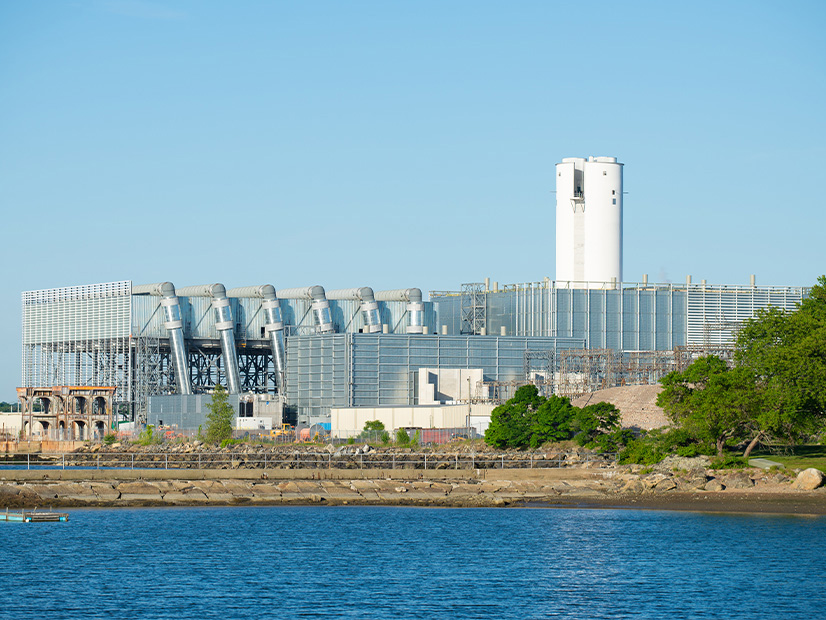
ISO-NE violated its tariff in its handling of construction delays at a Boston-area generating plant, FERC said, slapping the RTO with a $500,000 fine.
In an order issued on Friday, FERC agreed to a settlement requiring the grid operator to boost its compliance program for making capacity payments to the New Salem Harbor Generating Station before it had started operating or even finished construction (IN18-8).
The FERC filing builds on its settlement with the project’s developer, which was recently handed a $17 million fine for misleading ISO-NE about the project’s timeline. (See Developer in ISO-NE Hit with FERC Fine for Capacity Market Fraud.)
ISO-NE has repeatedly denied wrongdoing and called itself the victim of fraud. But FERC made clear in its order that they believe the grid operator played a role in encouraging the Salem Harbor developers to present misleading information about when the project was expected to be finished.
The gas-fired combined cycle generation plant had a planned commercial operation date (COD) of May 31, 2016, when it cleared the RTO’s Forward Capacity Auction In 2013. It was awarded a capacity supply obligation of 674 MW for the delivery year beginning June 1, 2016. FERC noted that the plant, which went into operation in June 2018, was the first new merchant generating resource to clear in ISO-NE’s FCA.
ISO-NE’s Violations
The FERC settlement lays out a detailed paper trail showing that ISO-NE failed to meet its duties under its tariff as the project was in development.
As likely delays popped up, Salem Harbor Power Development repeatedly provided information to ISO-NE about changing milestone dates, which should have led the company and grid operator to put forward a new commercial operation date, FERC found.
Instead, ISO-NE staff encouraged the developer to maintain May 31, 2017, as the COD. ISO-NE’s former director of resource adequacy did so explicitly to avoid triggering the automatic submission of a demand bid in the reconfiguration auction (ARA3) and forcing the company to give away its full capacity supply obligation, FERC said.
ISO-NE also violated its tariff by failing to submit a demand bid and submitting an inaccurate qualified capacity value, FERC’s Office of Enforcement found.
ISO-NE employees had enough information to know that they should have qualified it for 0 MW, FERC said.
Instead, the facility was qualified at 674 MW, which helped it earn more than $100 million in fraudulent capacity payments.
And finally, FERC found that ISO-NE restricted the access of its own Internal Market Monitor to capacity market data, including the narratives filed by the project’s developer, as the situation was unfolding.
“Enforcement concluded that System Planning’s conduct not only violated the tariff, but also frustrated the IMM’s key market oversight role,” the order reads.
ISO-NE spokesperson Matt Kakley said that since the incident, the organization has “taken steps to ensure that no one staff person can take such an action.”
And he noted that the Monitor was still able to obtain the information needed even while access to the data was curtailed.
An Intentionally Light Fine
ISO-NE did not admit or deny the violations put forward by FERC, but it agreed to a $500,000 civil penalty and $350,000 worth of compliance improvements.
Those include expanding a portal for employees to anonymously report potential violations, a new training module on tariff compliance and the role of the Monitor, and compliance monitoring by FERC.
“We recognize that a larger civil penalty might otherwise be appropriate given the magnitude of the capacity payments that ISO-NE made to Footprint,” FERC wrote in its order. “However, such a penalty likely would be passed on to the fee-paying entities, potentially compounding the harm to those entities and undermining the deterrent value of a larger civil penalty.”
ISO-NE acknowledged the possible harm to ratepayers too, by saying that its executives will pay the fine.
“ISO New England’s senior management takes responsibility for the ISO’s role in this matter. Therefore, the financial penalty outlined in the settlement agreement will be paid through a reduction in executive compensation,” the grid operator said in a statement.
Kakley said that will come in the form of a pro rata reduction, and that it will be made public in the form of the RTO’s financial reporting.
ISO-NE Response
The grid operator maintained a defiant tone in its statement on the settlement, saying that the events were precipitated by “Salem Harbor Power Development’s failure to provide accurate and complete information to ISO staff.”
But ISO-NE also recognizes that the investigation “revealed inadequacies in the market rules and our internal controls, and areas where better judgments could have been made.”
It has since changed capacity market rules to include an automatic financial penalty for resources that are behind in their development, and worked to “foster increased information exchange among internal groups.”
The issue of project delays wreaking havoc on the capacity market has not gone away. The results of this year’s capacity auction were significantly delayed while ISO-NE waited for FERC and the D.C. Circuit Court of Appeals to settle litigation over Killingly Energy Center, which had its capacity supply obligation pulled by the grid operator because of its failure to meet milestones and stay on track for its COD. (See ISO-NE Announces Capacity Auction Results After Killingly Delay.)
